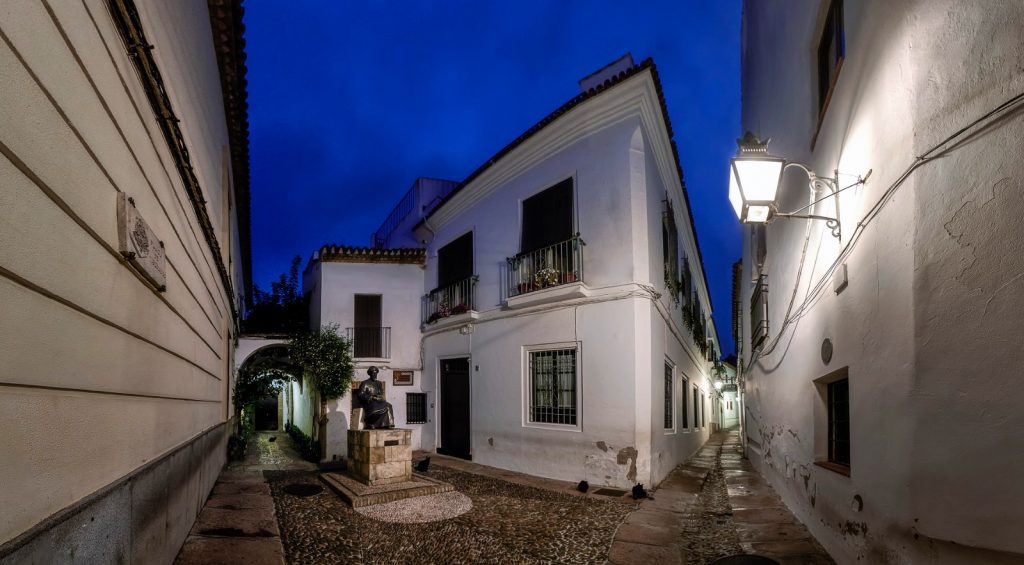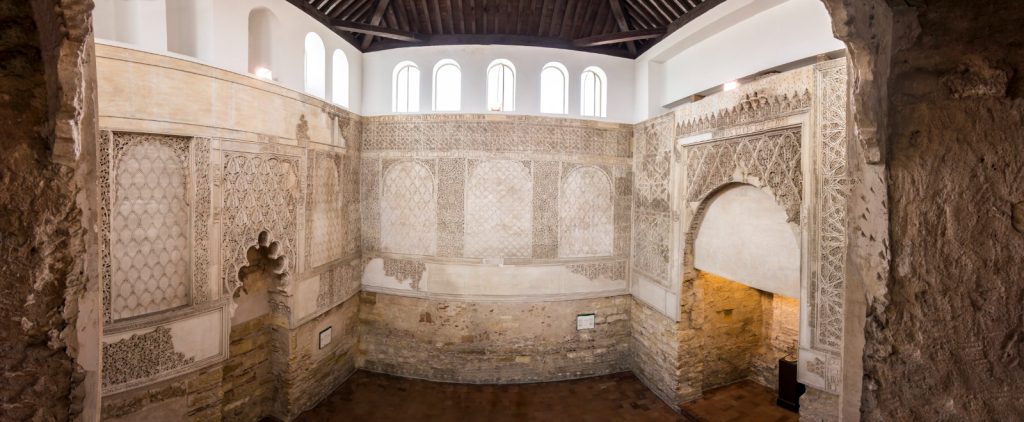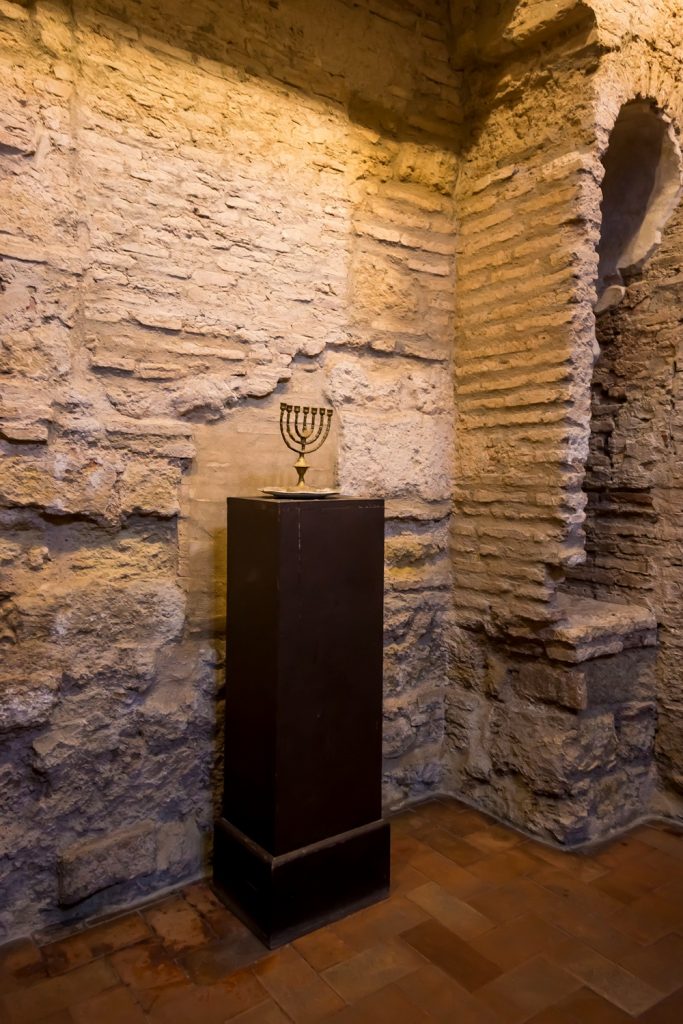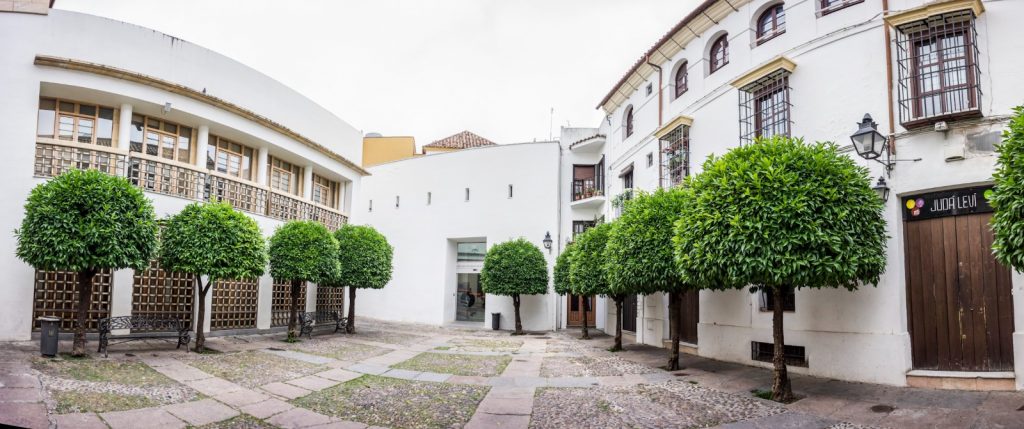Red de Juderias is very involved in sharing Spain’s long and rich Jewish heritage. Iñaki Echeveste, its director, tells us about the cultural programs, special events, and new routes drawn and presented by Red de Juderias.

Jguideeurope: Which cultural events will Caminos de Sefarad organize in 2025-26?
Iñaki Echeveste: Looking ahead to 2025 and 2026, we have a rich and diverse program in development, building upon the success of previous years while introducing exciting new initiatives. Our focus remains on celebrating the rich Sephardic heritage and its enduring influence on Spanish culture. While the final details are still being confirmed with our member cities, you can anticipate a vibrant array of events, including:
- Sephardic Music Festivals: These beloved events, held in various cities across the network, will continue to showcase the captivating melodies and rhythms of Sephardic musical traditions, featuring both established and emerging artists. Expect performances ranging from medieval cantigas to contemporary interpretations.
- Historical Reenactments and Living History Events: Several member cities will host immersive experiences that transport visitors back in time, bringing to life the daily lives, customs, and intellectual contributions of the Jewish communities that once thrived in these quarters. Think of bustling marketplaces, traditional crafts demonstrations, and theatrical performances.
- Academic Conferences and Seminars: We are planning a series of in-depth discussions and presentations by leading scholars on various aspects of Sephardic history, literature, philosophy, and art. These events provide invaluable opportunities for learning and intellectual exchange.
- Gastronomic Events: The unique flavors of Sephardic cuisine, a fascinating blend of Jewish dietary laws and local ingredients, will be highlighted through workshops, tastings, and collaborations with local chefs. Get ready to savor the tastes of history!
- Art Exhibitions: We will continue to curate and host exhibitions showcasing both historical artifacts and contemporary artwork inspired by Sephardic culture, providing new perspectives on this rich heritage.
- Educational Workshops and Family Activities: Engaging younger generations is crucial. We will offer interactive workshops, storytelling sessions, and guided tours designed to make Sephardic history accessible and engaging for children and families.
- Intercultural Dialogue Initiatives: Fostering understanding and connection between cultures remains a core mission. We will organize events that promote dialogue and exchange between the Sephardic heritage and contemporary Spanish society, as well as other cultures.

This year marks the 30th Anniversary and the Sephardic Citizenship Law. In which manner will you celebrate it?
The present year is indeed particularly significant for the Red de Juderías. We proudly celebrate our 30th anniversary in 2025, a testament to three decades of dedicated work in preserving, promoting, and sharing the legacy of Sepharad. This milestone is being marked by several key events:
- A Special Commemorative Conference in Toledo: We held a major academic conference in Toledo, a city with profound Sephardic roots, bringing together historians, researchers, and cultural figures to reflect on the network’s achievements and future directions.
- Publication of a Commemorative Book: A beautifully illustrated book chronicling the history of the Red de Juderías, its key projects, and the evolution of the Jewish quarters in Spain was published, serving as a lasting tribute to our journey.
- A Series of Public Events Across the Network: Each member city organized special events, including concerts, exhibitions, and guided tours, to celebrate the anniversary with their local communities and visitors.
- Our Gala Award which will be held in Ribadavia: In order to reward people and institutions that have a significant role in promoting, preserving and defending the Sephardic legacy.
Furthermore, 2025 marks the 10th anniversary of the Spanish Law granting citizenship to Sephardic Jews of Spanish origin. This landmark legislation has had a profound impact, reconnecting descendants of those expelled in 1492 with their ancestral homeland. To commemorate this significant anniversary, we organized, in collaboration with government institutions and Sephardic organizations, a national event in Madrid to acknowledge the historical significance of the law and its impact on individuals and communities.
- Roundtable Discussions and Testimonial Events: Across our network, we facilitate discussions and provide platforms for Sephardic individuals who have obtained Spanish citizenship to share their personal stories and experiences. These events are deeply moving and highlight the human dimension of this historical redress.
- Educational Campaigns: We launch online and in-person campaigns to raise awareness about the law and its implications, fostering a deeper understanding of this pivotal moment in Spanish history.

How has the Routes Project evolved recently?
Our “Routes of Sepharad” project, the very Caminos de Sefarad that forms part of our name, continues to evolve and deepen its reach. This initiative is central to our mission of connecting the historical Jewish quarters and offering visitors a meaningful journey through Sephardic heritage. Key developments include:
- Enhanced Digital Infrastructure: We have invested significantly in upgrading our digital platforms, including our website and mobile app, to provide visitors with more comprehensive information, interactive maps, and virtual tours of the Jewish quarters. This allows for a richer and more accessible experience, both on-site and remotely.
- Expansion of Thematic Routes: Beyond the geographical routes connecting the Jewish quarters, we are developing thematic routes that explore specific aspects of Sephardic culture, such as the legacy of prominent figures, the evolution of crafts and trades, and the influence of Sephardic thought.
- Collaboration with Local Stakeholders: We are strengthening our partnerships with local tourism boards, businesses, and cultural institutions to ensure a more integrated and sustainable approach to heritage tourism in the Jewish quarters. This includes training local guides and promoting businesses that reflect the cultural heritage of the areas.
- Development of New Interpretive Materials: We are continuously creating new interpretive materials, such as multilingual brochures, audio guides, and signage, to enhance the visitor experience and provide deeper insights into the history and significance of each site.
- Focus on Sustainable Tourism: Recognizing the importance of preserving these historical sites for future generations, we are increasingly incorporating principles of sustainable tourism into our routes project, encouraging responsible travel and minimizing environmental impact.
The “Routes of Sepharad” are not just physical paths; they are pathways to understanding, connection, and appreciation of a vital part of Spanish history.

Can you share an emotional encounter with a visitor or participant at an event you organized?
Ah, this question touches my heart deeply. There have been many profound moments, but one encounter during an educational project stands out vividly. We were conducting a workshop with a group of secondary school students in one of our member cities, focusing on the daily life of a Sephardic family before the expulsion.
As part of the workshop, we had brought in replicas of everyday objects – a Hanukkah menorah, a ketubah (marriage contract), and some examples of Ladino texts. A young girl, about fifteen years old, who had been quiet and somewhat reserved throughout the session, approached the display with hesitant curiosity. She gently picked up the replica of the ketubah, her eyes widening as she examined the intricate calligraphy.
Our educator explained the significance of the document, the promises it held, and the beauty of the language used. As the educator spoke, the girl’s expression shifted. A flicker of recognition, a hint of something deeper, crossed her face. After the session, she approached me, her voice barely expressed a whisper. She shared that her grandmother had often spoken of a “lost language” and showed her old, faded documents with scripts she couldn’t understand. Seeing the Ladino script on our replica, she said, felt like a sudden connection to that lost part of her family history. There were tears in her eyes, and in mine as well.
In that moment, the abstract history we often discuss became deeply personal. It wasn’t just about events and dates; it was about a young person rediscovering a thread of her own identity, a connection to her ancestors that had been obscured by time and displacement. It was a powerful reminder of the enduring human stories that lie within these stones and the vital role education plays in bringing them to light. That encounter reaffirmed for me the profound importance of our work in the Red de Juderías – it’s about preserving history, yes, but ultimately, it’s about connecting people with their heritage and fostering a deeper understanding of who we are.
It is these moments of connection, of shared discovery and understanding, that fuel our passion and dedication to the Red de Juderías de España-Caminos de Sefarad. We look forward to continuing this journey with you and all those who seek to explore the rich tapestry of Sephardic heritage in Spain.